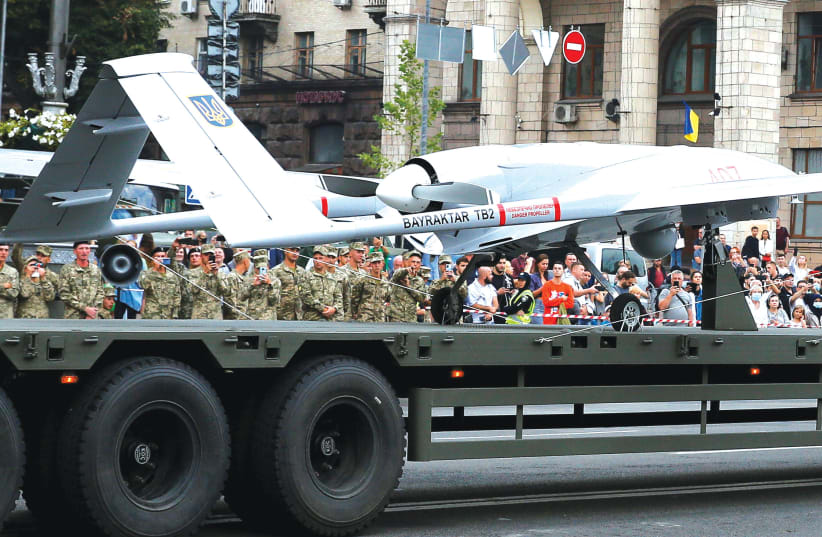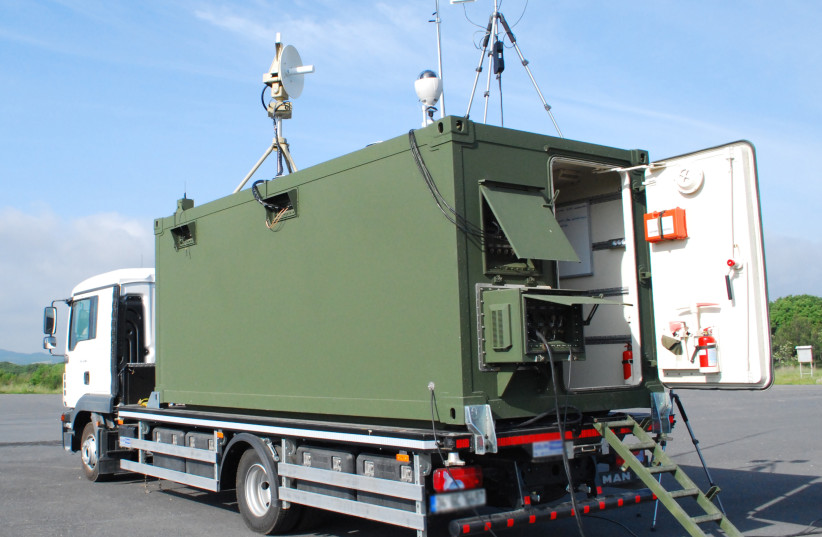In the early days of Russia’s invasion of Ukraine, drone footage began surfacing on social media showing deadly strikes against Russian military convoys. The culprit appeared to be Ukraine’s small fleet of Turkish-made Bayraktar TB2 combat drones. As Russia’s invasion continues to unfold, these drones have once again proven themselves to be a persistent and significant thorn in the side of Russia’s military ambitions.
From Syria to Libya to Azerbaijan to Ukraine, Russia has consistently seen Turkish drones appear on the opposite side of the battlefield – often significantly impeding Russian interests. In Ukraine, this trend has escalated as Turkish drones have now been recorded killing Russian soldiers directly for the first time.
Turkey’s Aerospace company Baykar first agreed to sell drones to Ukraine in 2019, in an agreement that included a training facility and plans for a future production site. Ukrainian military personnel were sent to Turkey for training and Ukraine received their first complete shipment in July 2021. When Russia invaded in February 2022, Ukraine’s fleet quickly took to the skies and helped impede Russian advances through strategic strikes on supply convoys, anti-aircraft systems and combat vehicles.
This is not the first time Turkish drones have helped change the tide of a battlefield. In Syria, Turkish drones have been instrumental in protecting Idlib and preventing Russian-backed forces from overtaking the last rebel-held province in Syria. A Turkish drone campaign in 2020 dubbed Operation Spring shield killed thousands of Syrian soldiers and destroyed hundreds of tanks in only a few days, preventing further advances into Idlib.
In Libya, the transfer of Turkish drones to the GNA during the Libyan civil war shifted the balance of power and upended Haftar’s siege of Tripoli. Counterattacks by the GNA using Turkish drones helped push back the LNA, which was heavily supported by Russia during the war. Afterwards, the GNA’s Interior minister reiterated publicly that it was Turkish drones that ultimately gave them a fighting chance against the LNA.
Turkish drones were also successfully used by Azerbaijan in the 2020 Nagorno-Karabakh war and allowed Azerbaijan to quickly defeat Armenia, a Russian ally. Thanks to Azerbaijan’s use of drones, they were able to overwhelm Armenian defenses, destroy hundreds of armored vehicles and in the end, absorb 40% of the disputed Nagorno-Karabakh region.
Ukraine is the latest battlefield to see the appearance of Turkish-made drones and has solidified the anti-Russian image these drones have fostered. Ukraine’s continued use of these drones could further strain Turkey-Russia relations, especially if Ankara remains willing to continue shipments. Turkey certainly does not want to see a deterioration of relations with Russia and will want to stay as impartial as possible. This was evident in late February when, after immense pressure from the West, Turkey closed access to the Black Sea to all warships but subtly left the door open for native fleets to continue to traverse the straights – allowing Russia’s Black Sea fleet freedom of movement.
While continued shipments of Turkish drones would certainly strain relations, the war in Ukraine is an ideal marketing opportunity for the Turkish defense industry. As the world witnesses the success of these drones against a major super power, this could help increase exports in the future. So far, Ukraine has received at least one additional shipment of TB2s from Turkey since the invasion began. Ukraine’s defense minister claimed it received a fresh shipment of the armed drones from Turkey on March 2. The next day, Turkish Deputy Foreign Minister Yavuz Selim Kıran confirmed this and sought to distance themselves from the arms sale stating: “Private defense industry companies can make such agreements with countries. These countries do not have a binding nature. This is not an aid from Turkey. They are products purchased by Ukraine from a Turkish company. Moreover, Ukraine is not the only country to buy Bayraktar TB2s. Everyone is in line to get the drones.”
Drones may be Ukraine’s last hope of maintaining some form of air assets. With a potential deal for NATO fighter jets scuttled, a new influx of drones may be Ukraine’s next best option. If Turkey remains willing to continue drone sales to Ukraine this may help their attempts to withstand Russian advances. Hopefully, Turkey will see enough of an incentive to continue drone shipments to Ukraine.
If not, Poland possesses a similar fleet of TB2s that could perhaps be transferred under the right circumstances. Either way, it is clear that Turkish drones remain a significant impediment to Russian interests. Ukraine is not the first instance and it won’t be the last.
The writer is the legislative fellow at the Endowment for Middle East Truth (EMET), based in Washington.

